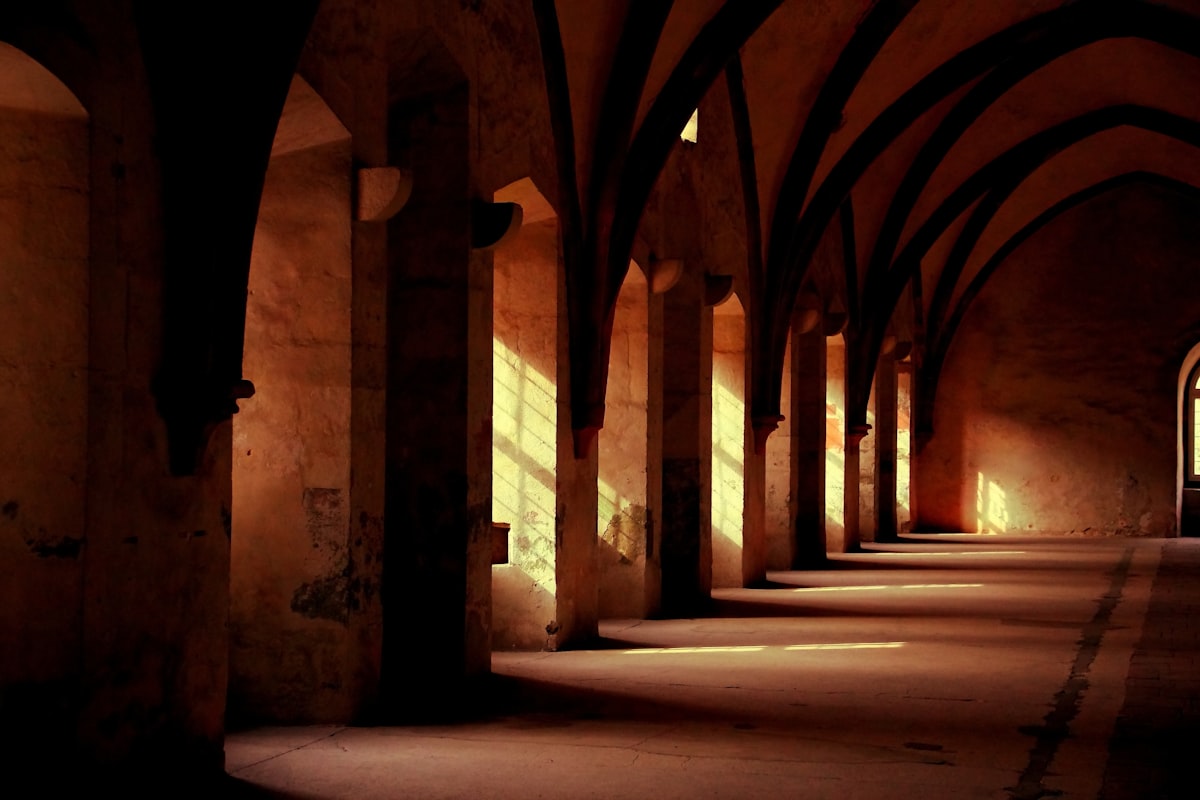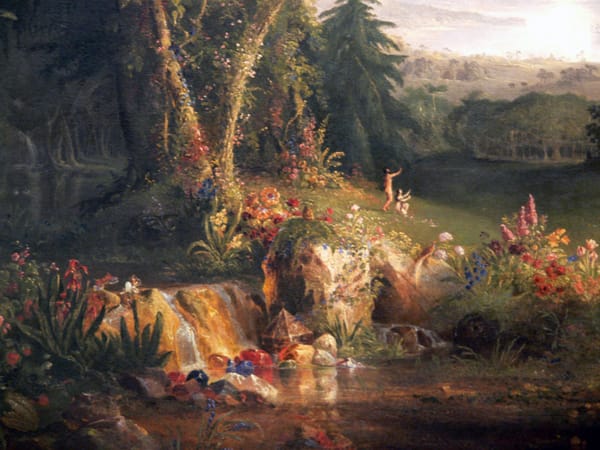There Is No Light
Tracking torches has become a false idol of fantasy adventure gaming. There are better ways to achieve the stated ends: both imbuing a healthy fear of the dark, and escalating risk over time.

Luke Gearing's The Isle rhythmically states that for each floor of the dungeon: There is no light.
Not just poetic, this is also critical context for play, and would apply to most indoor or underground environments in pre-industrial times. Many games do not overly concern themselves with illumination, but it has always been salient in fantasy adventure gaming.
One of the maxims of "old school" play is that strict time records must be kept, and likewise the proper accounting of encumbrance is a virtue next to godliness.
The corollary to all this is that tracking torches must matter, with endless variations of rules and procedures in print and across the blog-o-sphere; attempting to inject some joy, or at least meaning, into this banal task. It is maintained that this is necessary for verisimilitude, and the risk-reward play of dungeon crawling: pushing ever deeper into the mythic underworld.
Contrariwise, I have never found joy or meaning in tracking torches. I propose that it has become a false idol of fantasy adventure gaming. There are better ways to achieve the stated ends: both imbuing a healthy fear of the dark, and escalating risk over time.
Fear of the Dark
Arguably, the notion of bearing torches underground is aesthetic nonsense - candles, Roman oil lamps, and rushlights are far more sensible. The tradition of adventurers carrying torches into dungeons is undoubtedly now a beloved trapping of the genre.
Regardless, a simple rule can achieve much (courtesy of A Knight at the Opera): any mundane portable illumination casts bright light allowing fine colour vision out to 5 ft (sword's reach), dim light allowing poor greyscale vision a further 5 ft (polearm's reach), and beyond that only formless shadows and the glint of approaching steel.
It follows that players should not be told precise dimensions of rooms as crawling the dungeon, and inhabitants and furnishings beyond the threshold should be described impressionistically. To progress they must boldly go into the darkness, getting within reach of items to look closely, and always mindful that a denizen might creep right up behind them.
Classical Greek mythology named the personification of darkness Erebus, and is a perfect accompaniment to the mythic underworld. A strong description for this concept in imagination games is by Patrick Stuart in Veins of the Earth (edited for brevity and emphasis added):
When someone enters a new underground space, never say “you enter a cave”. Because they don’t know that. ONLY EVER SAY “YOU SEE...” And they can only see so far.
Never assume sight. Assume dark. A simple way to do this is to imagine the darkness as alive...
It should be almost embodied. In the same way that people in the Middle Ages often thought of god as a presence in the room. Not a general awareness or a set of laws but an actual person. Like someone standing silently in the corner of the room, watching you as you read this. The darkness is a character. It only wants one thing...
The dark hates the players; you play the dark. You will probably forget that a candle has a ten foot radius but you will never stop waiting for the candle to go out.
Erebus (or a deific personification of darkness of your own invention) lurks in every dark and dimly lit corner of the underworld. Erebus hates interlopers, hence hates the adventurers, and impatiently stalks them from the edge of darkness, just waiting to be let in by their candle going out. There are no longer empty rooms in your dungeons: Erebus is always there. Unseen, but ever dancing in the corner of your sight, impatiently waiting to take you in its embrace.
There is no light.
Escalating Risk
The design pattern of associating risk with reward has been dubbed triangularity by Jesse Schell in The Art of Game Design, and argued it is one of the most potent design techniques.
This triangularity is purportedly borne by tracking torches. Whether the procedure is of predictable attrition (such as a torch spent every turn of a fictional 10 minutes), or random depletion (such as 1-in-6 chance every turn); the notion is that your finite supply of torches will eventually be exhausted.
Unfortunately, scrobbling about in pitch black is not very toyetic, and most games don't actually elaborate how to play out this fail state. The most workable solution I have seen is some procedure to gloss over the deadly process of extricating yourself out of the dark dungeon and back to the lit surface. Saving throw versus darkness?
Further, we already have effective sources of tension: encumbrance and random encounters!
As an adventurer aquires more treasure, they at least stand to lose more (increasing reward for fixed risk). We can also try procedures where carrying capacity slowly diminishes (such as acquiring a slot of fatigue on 1-in-6 chance every 10 minute turn). This puts a clock on the expedition for it to remain profitable - introducing an inflection point where the players must decide when to stay their greed and head back out.
In most adventure games there is also a 1-in-6 chance of an encounter every 10 minute turn. Though violence should not be assured, these encounters fundamentally threaten to deplete resources (hit points, spell slots, consumable items) or risk death, for at most a pittance in treasure.
There is already escalation from depleting resources to face each encounter, but we can sharpen this. For instance, create a table of 12 encounters (lower numbered more benign, higher numbered more deadly) and start rolling d6. Every time a random encounter occurs, increment a second d6 (1, 2, 3 et cetera) and add that to subsequent rolls. Inform the players that this is the procedure, and keep the escalation die in the open.
The insipid marking off of torches pales in comparison to the fear inculcated by a well-stocked random encounter table. The ticking clock for the looming threat of the nastiest denizen of the dungeon suddenly arriving is far more effective.
There is no light.
Conclusion
We don't need a clever way to track torches to enrich our dungeon crawling. We need only give rich but limited visual sensory information, embody darkness as a villain that lurks in every shadowed corner, and lean hard on the existing risk mechanics, like encumbrance and random encounters.
There is no light.
Behold - Erebus.




